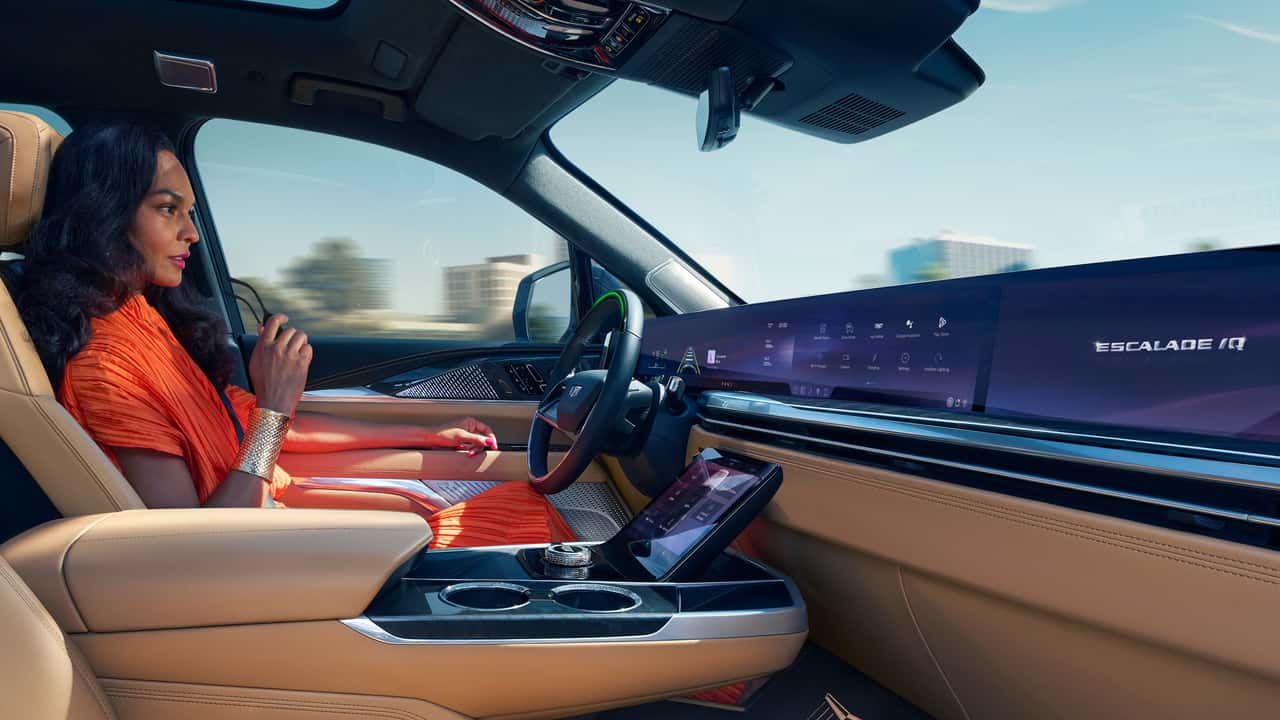- General Motors is working on making its Super Cruise advanced driving assistance system (ADAS) a truly hands-off, eyes-off solution.
- Currently, there’s only one Level 3-capable system on sale in the U.S., Mercedes-Benz’s Drive Pilot.
People have envisioned self-driving cars for decades, if not centuries, but the fact remains that today you still can’t walk into a showroom and buy a car that will drive you from point A to point B while you watch a movie or take a nap.
Enter General Motors. You know, that good-old American automaker that brought us gems like the GM EV1, Chevrolet Volt and–more recently–the stupendous GMC Hummer EV and Chevrolet Silverado EV range monster.
GM wants to bring truly hands-off, eyes-off driving to its customers in the United States, thus becoming the first American car manufacturer to do so on a large scale. According to Dave Richardson, Senior Vice President of Software and Services Engineering at GM, who spoke with TechCrunch for an extensive interview, the Detroit giant is working on transforming Super Cruise, its hands-off driving assistant, into a true Level 3 advanced driving assistance system (ADAS).
“Super Cruise, I think, is an industry-leading level 2 solution for hands-off, eyes-on,” Richardson told TechCrunch. “We’re looking aggressively to make that an L3 solution, where you don’t even have to look at the road anymore.”
As a reminder, Super Cruise works on several GM vehicles and is the only system in the United States that offers hands-free driving assistance while towing. It debuted in 2017 as the industry’s first hands-free ADAS, and by the end of 2025, it will be available on roughly 750,000 miles of roads in the U.S. and Canada, including rural and minor highways. It offers adaptive cruise control, lane centering and on-demand lane changes.
According to the Society of Automotive Engineers (SAE), a Level 2-capable vehicle can steer, accelerate and brake on its own, but the driver must always supervise it. That’s how Tesla’s Autopilot and Full Self-Driving (Supervised) systems are categorized, along with the vast majority of ADAS features offered by other automakers, including Ford’s BlueCruise, which recently got an update.

Super Cruise active on a Cadillac vehicle
Mercedes-Benz is the only brand that has a Level 3-capable advanced driving assistance system on sale today in the United States, but that can only be activated in certain cities, on certain freeways and only at up to 40 miles per hour (although the speed limit can be upped to 70 mph once federal and state laws permit.)
General Motors’ rep didn’t provide a timeline for the rollout of the updated Super Cruise and didn’t say how far development has progressed, but mentioned that it’s very important for the feature to be ready when customers gain access to it.
“If you don’t quite trust it, and it kicks you out, then it’s sort of like–the analogy I give sometimes is–you’re driving with your 15-year-old that’s just learning how to drive,” Richardson told TechCrunch. “You don’t really trust them, and it almost becomes a little bit more stressful.”
That’s the same approach as Mercedes-Benz, and the exact opposite of Tesla, which famously used its customers as beta testers for its FSD feature. The system even had a “Beta” label attached to it for much of its existence, before getting rebranded to Full Self-Driving (Supervised), meaning that the driver is still in charge, and not the car.
General Motors (GM) is taking bold steps in the development of autonomous driving technology with its Super Cruise system. Launched in 2017, Super Cruise has been lauded for its advanced driver assistance features, allowing for hands-free driving on select highways. Now, GM is pushing the limits even further by aiming to achieve hands-off, eyes-off driving assistance with Super Cruise.
The idea of hands-off, eyes-off driving may sound like something out of a science fiction movie, but GM is determined to make it a reality. By utilizing a combination of high-precision GPS, LiDAR mapping, cameras, and sensors, Super Cruise is able to navigate the road with a level of accuracy and precision that surpasses many other self-driving systems on the market.
The move towards hands-off, eyes-off driving assistance represents a significant leap forward in autonomous driving technology. While some may view this as a risky proposition, GM has emphasized that safety remains a top priority. The system is designed to constantly monitor the driver’s attention level and can alert them if intervention is required. Additionally, Super Cruise will only be available on pre-mapped highways to ensure the safest driving experience possible.
GM’s commitment to advancing autonomous driving technology is evident in its ambitious goals for Super Cruise. By aiming for hands-off, eyes-off driving assistance, GM is setting a new standard for what is possible in the realm of self-driving cars. With continued advancements in technology and a focus on safety, GM is poised to revolutionize the way we think about driving.
In conclusion, GM’s push for hands-off, eyes-off driving assistance with Super Cruise is a testament to the company’s dedication to innovation and safety. As autonomous driving technology continues to evolve, GM is leading the way with its cutting-edge approach to driver assistance. With Super Cruise at the helm, the future of driving looks brighter than ever.

